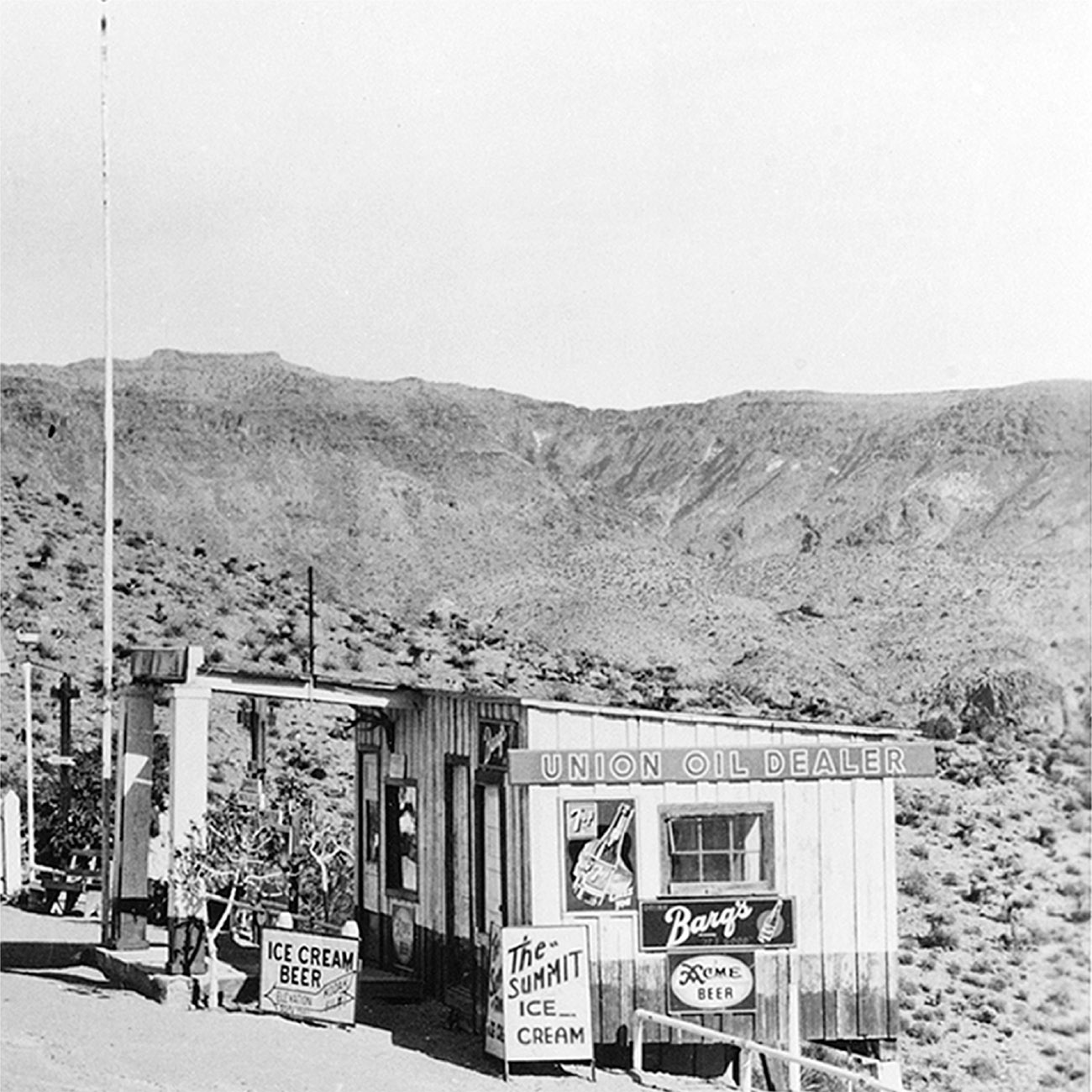
The allure of Route 66 can put a powerful spell on a person. I offer myself as a prime example. It will sneak up and pounce on you without warning. One day you appear normal and seem fine, then, before you realize it, you find yourself strapped in your automobile traveling thousands of miles to search for and photograph Route 66 icons. I have never been able to pinpoint or put into words the reason for this addiction to the road, but its hold on me is formidable. The thrill of finding an old café or motel or, better yet, a long, abandoned portion of highway is exhilarating. Anyone who enjoys exploring our country’s old roads or even its old pioneer trails, like the Santa Fe and Oregon trails, knows what I am talking about.
Something about these historic pathways draws you in, and the more you dig, the deeper you want to go. So much history of these early roads and trails was never recorded or has been lost forever. Photographic documentation of the pioneer trails is mostly nonexistent. What a treat it would be to open the pages of a book and see the way the trail appeared when wagons blazed dusty tracks and pioneers and traders tackled the formidable Santa Fe. What did the Iron Springs Stage Station or the crossing at Turkey Creek look like during the heyday of the Santa Fe Trail? I have spent hours daydreaming and imagining these scenes.
In a hundred years will we look at Highway 66 as we do the old pioneer trails? Will Route 66 be viewed as an ancient and primitive trail once used by pioneering tourists? Will roads be unnecessary by then? Will there be anything left to explore? Will someone a hundred years in the future wonder what travel was like on Old Route 66, just as many of us today wonder about the dusty old wagon trails? These are the questions I hope to answer in the Route 66 Lost & Found books.
In its present state, Route 66 is a 2,400-mile museum of early auto travel, but sadly we lose a bit of that history in the name of “progress” every day. My goal is to document as much of this historic highway and its roadside culture as possible with the hope that future generations will look on these books as I do books on the old western trails. Can you imagine someone in the distant future being shocked by the fact that you actually had to stop for gasoline, or amazed that people actually used machines that needed such a primitive fuel to operate? I am sure that if you stop and think about the covered wagons of 150 years ago, your thoughts would be similar to those of someone 150 years from now regarding Route 66 and automobile travel. When you open this book and thumb through its pages, it is my sincere hope that you feel and experience a portion of the spell that Route 66 has put on me.
There are many people to thank for helping me with this book. I owe a great deal of gratitude to the people who allowed me access to their private postcard collections: Laurel Kane, Jerry McClanahan, Jeff Meyer, Steven Rider, Jim Ross, Joe Sonderman, and Mike Ward.
The following people I thank for helping with research and supplying vintage photos of many of the subjects appearing in this book: Nick Adam, Kathy Anderson, Tim Burchett, Marion Clark, C. H. “Skip” Curtis, Linda Drake, Mike Dragovich, Janice Lauritzen, John Hockaday, Richard Mangum, Scott Piotrowski, Bill Thomas, John Weiss, Betty Wheatley, and the late Tom Teague. Special thanks go out to Russell Adams at Schulman Photo Lab in Hollywood and to Chris More and Zach Allred for allowing me access to the PG&E facility for the Red Rock Bridge Photo. Thanks, also, to Brett Bather for technical assistance.
Finally, a very special thank you to Mardjie and Vince Paradero of Frank’s Custom Lab in North Hollywood for their invaluable assistance in the making of this book.